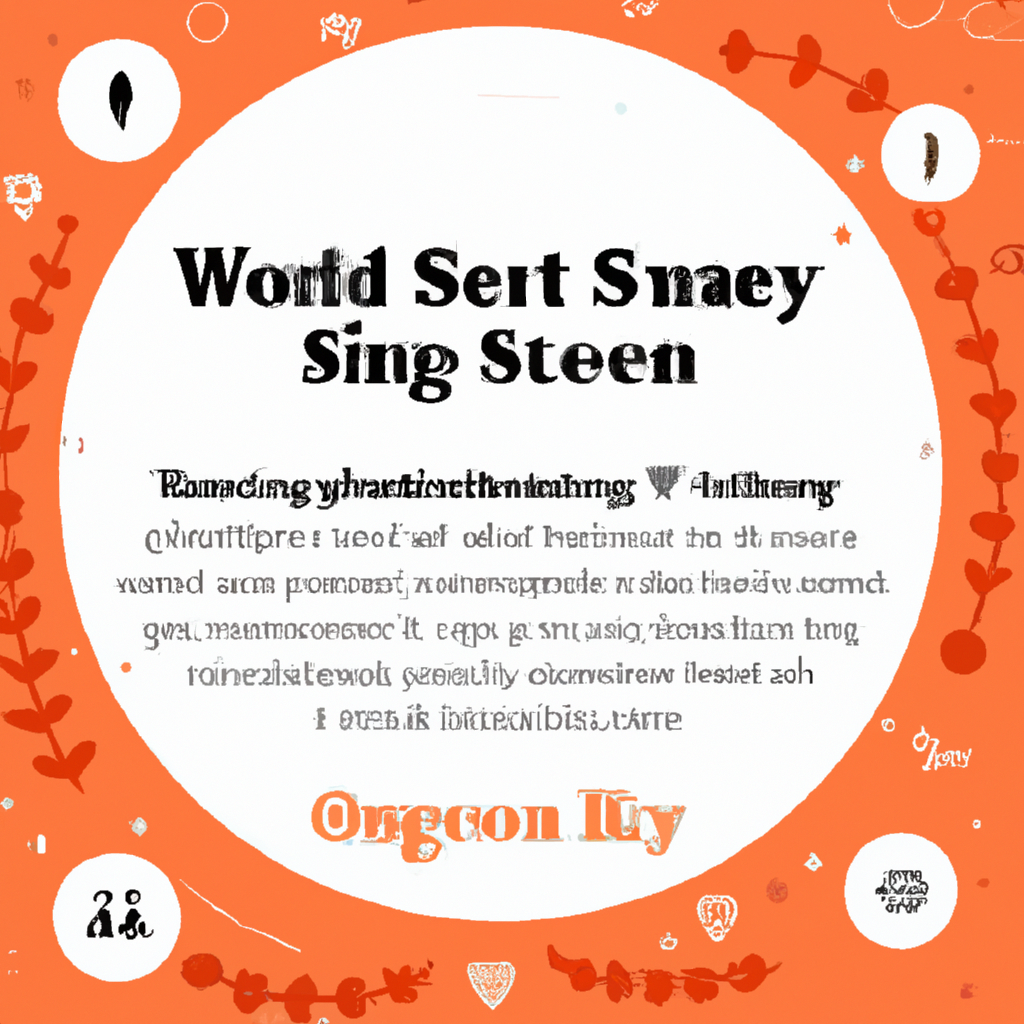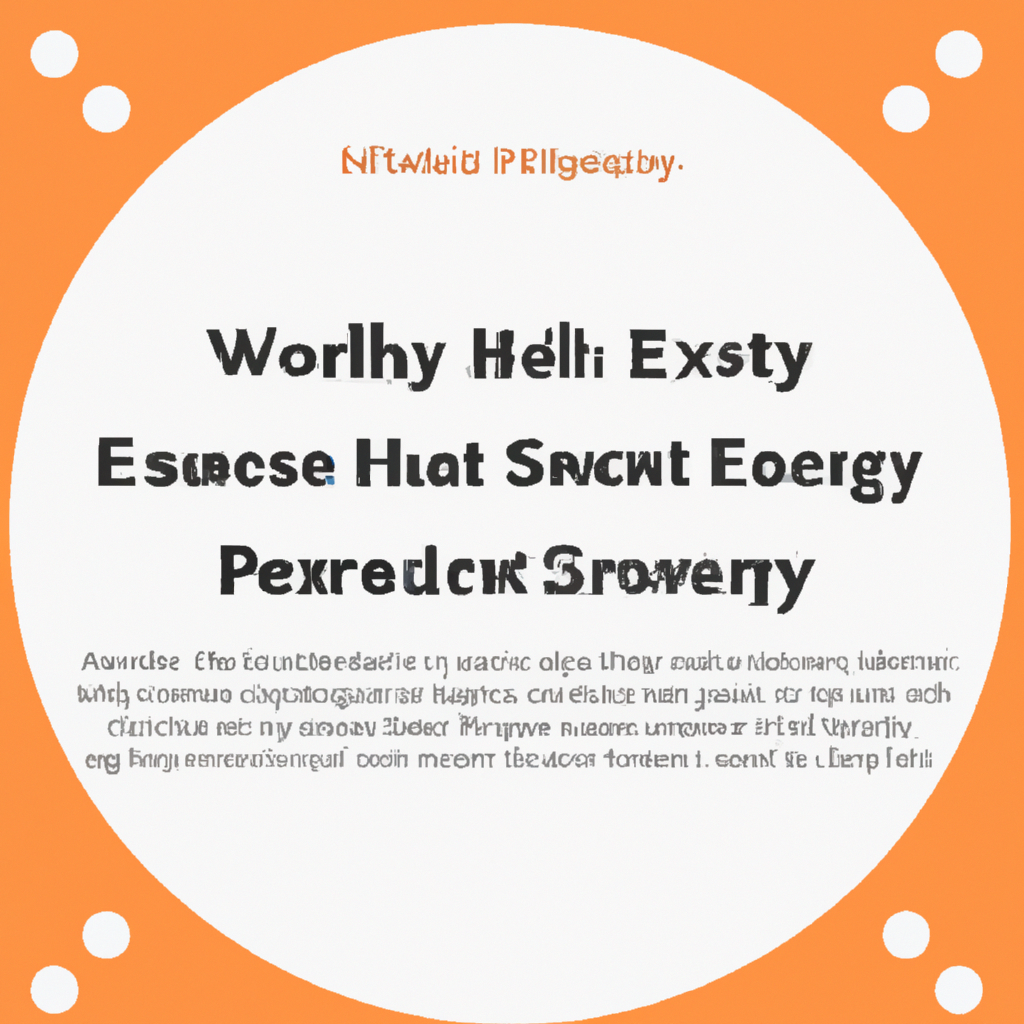In this article, you will discover a fascinating journey of how an Etsy keyword with a high volume was uncovered by leveraging effective SEO strategies. Dive into the world of Etsy keyword research, explore the depths of Etsy SEO strategies, and uncover the secrets of Etsy shop optimization. Through this engaging narrative, you will gain valuable insights on how to identify and harness the potential of high-volume keywords to maximize your presence on the Etsy platform. Get ready to embark on an adventure that will revolutionize your Etsy shop’s visibility and success!

Understanding Etsy keyword research
What is keyword research?
Keyword research is the process of identifying and selecting specific words or phrases that are relevant to a particular industry, product, or service. In the context of Etsy, keyword research involves identifying the keywords that potential customers are using to search for handmade, vintage, and unique items on the platform.
By conducting thorough keyword research, Etsy sellers can better optimize their listings and improve their visibility in search results. This, in turn, can lead to increased traffic, higher conversion rates, and ultimately, more sales.
Importance of keyword research in Etsy SEO
Keyword research is a critical component of Etsy SEO (Search Engine Optimization). By understanding and utilizing the right keywords, sellers can position their products in front of the right audience at the right time.
Without proper keyword research, a seller’s listings may not appear in relevant search results, meaning potential customers may never come across their products. By conducting thorough keyword research, sellers can gain insights into the search terms used by their target audience and optimize their listings accordingly.
Common mistakes to avoid in Etsy keyword research
When conducting keyword research for Etsy, it’s important to avoid some common mistakes that can hinder your success. Some of these mistakes include:
-
Overusing popular keywords: While it may seem tempting to target highly popular keywords, competition for these terms can be fierce. It’s essential to strike a balance between popular keywords and less competitive, more niche-specific terms.
-
Ignoring long-tail keywords: Long-tail keywords are longer, more specific phrases that typically have lower search volumes. However, they can be highly valuable in targeting a more specific audience and increasing conversion rates.
-
Failing to monitor keyword performance: Keyword research is an ongoing process. It’s crucial to regularly analyze the performance of your chosen keywords and make adjustments as necessary. Ignoring keyword performance can lead to missed opportunities for improved visibility and sales.
Etsy SEO strategies
Optimizing your Etsy shop
Optimizing your Etsy shop involves a combination of on-page and off-page factors to maximize your visibility and reach. Here are some strategies to consider:
-
Complete your shop profile: Fill out all relevant information in your shop profile, including your shop name, logo, cover photo, and a comprehensive About section. This helps create a professional and trustworthy image for your shop.
-
Utilize shop sections: Organize your listings into relevant sections to make it easier for buyers to browse and find products they are interested in.
-
Utilize shop policies: Clearly define your shop policies regarding shipping, returns, and any other important information. This helps build trust with potential buyers and sets expectations.
-
Optimize your shop announcement: The shop announcement is the first thing buyers see when they visit your shop. Utilize this space to highlight any promotions, new arrivals, or other important information.
Identifying target keywords for your listings
To optimize your listings effectively, you need to identify the target keywords that your potential customers are using to find products like yours. Here’s how you can go about it:
-
Think like a customer: Put yourself in the shoes of a buyer and think about the keywords they would use to search for your product. Consider the characteristics, features, and benefits that would be important to them.
-
Use Etsy search suggestions: Start typing relevant keywords related to your product in Etsy’s search bar. Take note of the suggestions that appear, as these are common search terms used by buyers.
-
Utilize keyword research tools: There are several keyword research tools available, such as Google Keyword Planner and EtsyRank, that can provide insights into search volume, competition, and related keywords.
Optimizing product titles with relevant keywords
One of the most crucial places to incorporate your target keywords is in your product titles. Here are some tips to optimize product titles effectively:
-
Start with the most important keywords: Place the most relevant and high-performing keywords at the beginning of your title to ensure they catch the attention of potential buyers.
-
Use descriptive language: Apart from incorporating keywords, make sure your titles accurately describe your product and its unique characteristics. This helps both buyers and search algorithms understand what you’re offering.
-
Avoid keyword stuffing: While it’s important to include relevant keywords, it’s equally important to maintain readability and avoid overusing keywords. Write titles that make sense and flow naturally.
Crafting compelling product descriptions
Product descriptions play a crucial role in conveying the value of your products to potential buyers. Here’s how you can optimize your descriptions:
-
Use your target keywords naturally: Incorporate your target keywords in the description, but avoid keyword stuffing. Focus on providing helpful and engaging information to the buyer.
-
Highlight key features and benefits: Clearly communicate the unique selling points of your product, emphasizing how it solves specific problems or meets customers’ needs.
-
Utilize bullet points and headings: Break up your product description into easily scannable sections utilizing bullet points and headings. This helps buyers quickly find the information they are looking for.
Creating tags and attributes for improved visibility
Tags and attributes are essential components of Etsy listings that can significantly impact their visibility. Here’s how to optimize them:
-
Utilize all available tags: Etsy provides space for multiple tags, so make sure to use all of them. Include variations of your target keywords as well as more specific descriptors to maximize visibility.
-
Incorporate attributes: Attributes provide even more specific information about your product, such as size, color, and material. Make sure to utilize the available attribute options to provide accurate details.
-
Experiment and analyze: Continuously analyze the performance of your tags and attributes. Make adjustments based on data to find the optimal combination for improved visibility and reach.
Utilizing long-tail keywords for better targeting
While popular keywords can bring in a considerable amount of traffic, long-tail keywords can be powerful in targeting a specific audience. Here’s why you should consider utilizing long-tail keywords:
-
Enhanced targeting: Long-tail keywords are typically more specific and reflect the intent of buyers with a higher purchase intent. By targeting these keywords, you can reach customers who are closer to making a purchase.
-
Lower competition: Long-tail keywords often have lower competition compared to broader, more popular keywords. This means you have a better chance of ranking higher in search results, increasing your visibility.
-
Higher conversion rates: Since long-tail keywords attract a more specific and qualified audience, they are more likely to result in higher conversion rates. By optimizing for long-tail keywords, you can attract customers who are actively seeking what you offer.
Understanding and leveraging SEO trends
SEO trends are constantly evolving, and it’s important to stay updated to maintain optimal visibility. Here’s how you can understand and leverage SEO trends for your Etsy shop:
-
Keep an eye on industry news and updates: Stay updated with the latest news and changes in the e-commerce and SEO industries. This can help you adapt your strategies in a timely manner.
-
Follow successful sellers and competitors: Pay attention to successful sellers in your niche and analyze their strategies. Look for patterns and trends that can inspire your own approach.
-
Utilize SEO tools and analytics: Leverage SEO tools and analytics to monitor your keyword performance and identify emerging trends. This data can help you make informed decisions and optimize your listings accordingly.
Analyzing and adapting to competitor keywords
Competitor analysis is an essential aspect of keyword research. By analyzing the keywords your competitors are targeting, you can gain valuable insights and adapt your own strategy. Here’s how to go about it:
-
Identify your top competitors: Research and identify the sellers who are consistently performing well within your niche. These are the competitors you should focus on analyzing.
-
Analyze their listings and keywords: Thoroughly examine their product titles, descriptions, tags, and attributes. Look for patterns and common keywords they are targeting.
-
Adapt your strategy: Use the insights gained from competitor analysis to refine your own keyword strategy. Incorporate similar keywords or find unique angles that can set your listings apart.
Optimizing images and visual content
High-quality images and visual content are crucial for capturing the attention of potential buyers and increasing engagement. Here’s how you can optimize your visual content:
-
Use high-resolution images: Ensure your product images are clear, well-lit, and showcase your products from various angles. High-resolution images create a positive impression and help customers make informed purchasing decisions.
-
Optimize image file names and alt tags: Use descriptive file names and alt tags that incorporate relevant keywords. This helps search engines understand the content of your images and can improve their visibility in image searches.
-
Consider lifestyle and contextual images: Supplement your product images with lifestyle and contextual images that help buyers visualize the product in use. This can make your listings more engaging and memorable.
Monitoring and tracking keyword performance
To ensure the success of your keyword strategy, it’s crucial to monitor and track your keyword performance. Here’s how you can do it effectively:
-
Utilize Etsy analytics: Take advantage of Etsy’s built-in analytics tools to monitor your listing performance. Pay attention to the keywords that are driving the most views, clicks, and conversions.
-
Set up external tracking: Consider using external SEO tools or Google Analytics to gain even more detailed insights into your keyword performance. These tools can provide additional data and help you make more informed decisions.
-
Make data-driven adjustments: Regularly analyze your keyword performance and make adjustments based on the data. Identify keywords that are underperforming and experiment with new ones to maintain optimal visibility.
Importance of Etsy shop optimization
Increased visibility and discoverability
By optimizing your Etsy shop, you can significantly increase your visibility and discoverability among potential buyers. When your shop appears higher in Etsy’s search results, more people are likely to come across your products.
Driving targeted organic traffic
Effective shop optimization can attract targeted organic traffic by ensuring your listings appear in front of the right audience. By using the right keywords and optimizing your shop elements, you can attract customers who are actively searching for products like yours.
Improving conversion rates
When potential buyers find your listings through targeted keywords and are presented with compelling product descriptions, high-quality images, and positive reviews, your conversion rates are likely to improve. A well-optimized shop can help turn browsing visitors into paying customers.
Enhancing overall customer experience
A well-optimized Etsy shop creates a positive customer experience. By providing accurate and detailed information about your products and maintaining clear shop policies, you can build trust and confidence in potential buyers.
Staying competitive in the market
Optimizing your Etsy shop is essential for staying competitive in a crowded marketplace. By implementing effective SEO strategies, continuously monitoring your keyword performance, and adapting to trends, you can position yourself for long-term success.
Step-by-step process to find an Etsy keyword with high volume
Finding an Etsy keyword with high volume requires a systematic approach. Here’s a step-by-step process to guide you:
Start with brainstorming
Begin by brainstorming a list of keywords that come to mind when you think about your product. Consider the characteristics, uses, and benefits of your product to generate a comprehensive list of potential keywords.
Research popular Etsy search terms
Use Etsy’s search bar and type in some of the keywords you brainstormed. Take note of the suggestions that appear, as these are common search terms used by buyers on the platform. Build upon these suggestions to refine your keyword list further.
Evaluate keyword competition
Before finalizing your keywords, evaluate the competition associated with each term. Look at the number of search results each keyword generates and the quality of the top-ranking listings. Avoid keywords with extremely high competition, as it may be difficult to rank well against established sellers.
Utilize SEO tools for in-depth analysis
Leverage SEO tools such as Google Keyword Planner, EtsyRank, and SEMrush to gain deeper insights into keyword search volume, competition, and related keywords. These tools can help you identify high-volume keywords that align with your product.
Filter keywords based on search volume
Review the search volume data provided by the SEO tools and prioritize keywords with higher search volumes. Remember to balance search volume with competition, as overly competitive keywords may be challenging to rank for.
Consider relevancy and specificity
Ensure that the keywords you choose remain relevant to your product and accurately describe its features and benefits. Avoid generic keywords that may attract irrelevant traffic or mislead potential buyers.
Assess keyword competition and ranking difficulty
Analyze the top-ranking listings for your chosen keywords. Evaluate the quality and competitiveness of these listings to determine if you have a realistic chance of ranking well. Consider the seller’s reputation, product reviews, and listing optimization.
Select the keyword with a balance of volume and competition
Choose a keyword that strikes a balance between search volume and competition. It should have a reasonable level of search volume to attract traffic, while also having relatively less competition to increase your chances of ranking well.
Implement the chosen keyword in your listings
Once you’ve selected the keyword, incorporate it strategically into your product title, tags, attributes, and descriptions. Ensure that the keyword is used naturally and does not disrupt the flow or readability of your content.
Monitor and refine your keyword strategy
Continuously monitor the performance of your chosen keyword and make adjustments as necessary. Analyze the impact it has on your visibility, clicks, and conversions, and experiment with new keywords to optimize your listings further.

Best practices for Etsy keyword research
Here are some best practices to follow when conducting keyword research for Etsy:
Continuously update and refresh your keyword list
Keyword research is an ongoing process. Regularly revisit your keyword list to ensure it remains up to date with current trends, customer preferences, and changes in your industry.
Regularly analyze keyword performance
Analyze the performance of your chosen keywords on a regular basis. Monitor metrics such as search views, clicks, and conversion rates to identify keywords that are bringing in the most qualified traffic and adjust your strategy accordingly.
Stay updated with SEO trends
Keep yourself informed about the latest trends and changes in SEO. Follow industry blogs, attend webinars, and participate in discussions to stay ahead of the curve and make informed decisions.
Experiment with different keywords
Don’t be afraid to experiment with different keywords to find what works best for your shop. Test new keywords, track their performance, and make data-driven decisions on which ones to keep and which ones to discard.
Utilize long-tail keywords for niche targeting
Incorporate long-tail keywords into your strategy to target a more specific and engaged audience. Long-tail keywords can help you stand out from competitors and attract buyers who are actively looking for products like yours.
Optimize your shop policies and About section
While not specifically related to keyword research, optimizing your shop policies and About section can contribute to your overall shop optimization. Provide thorough and accurate information to build trust with potential buyers.
Leverage customer reviews and testimonials
Positive customer reviews and testimonials can be powerful social proof. Encourage happy customers to leave reviews and testimonials, and incorporate them into your listings. This can enhance your shop’s credibility and attract more buyers.
Maintain a healthy balance between volume and competition
Strive to find keywords with a balance between search volume and competition. Prioritize keywords that have a moderate to high search volume while avoiding those with excessive competition that may hinder your visibility.
Optimize listing attributes for improved visibility
Don’t overlook the importance of optimizing your listing attributes. Fill out the available attribute options accurately and comprehensively to provide potential buyers with as much relevant information as possible.
Utilize keyword-rich titles, tags, and descriptions
Incorporate your target keywords naturally into your titles, tags, and descriptions. Ensure that it enhances the overall clarity, relevance, and readability of your content. A well-optimized listing can significantly improve your visibility and attract more buyers.
Conclusion
Effective Etsy keyword research is crucial for maximizing your shop’s visibility, attracting targeted organic traffic, and improving conversion rates. By understanding the importance of keyword research, implementing SEO strategies, and continuously monitoring and optimizing your keyword performance, you can set your Etsy shop up for long-term success. Remember to keep up with SEO trends and best practices, experiment with different keywords, and optimize all aspects of your shop to enhance the overall customer experience. With a well-optimized shop and effective keyword strategy, you can stand out in the competitive Etsy marketplace and achieve your business goals.



